One Hotel Room to Avoid this Halloween
Wednesday, October 26, 2022
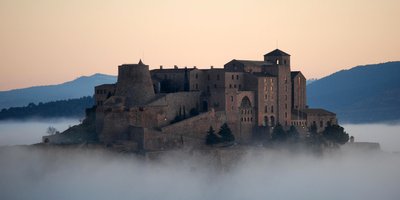
The Castle of Cardona is arguably the most important medieval fortress in Catalonia. It is situated on a hill overlooking the river valley of the Cardener and the town of Cardona.
Wilfred the ‘Hairy’ originally constructed this fortress in 886. It is in both the Romanesque and Gothic styles. During the 14th century, the dukes of Cardona came from the most important family of the Crown of Aragon, which was second only to the royal house. Because of this, they were called “kings without crowns,” as they had extensive territories in Catalonia, Aragon, and Valencia, and dynastic ties with Castile, Portugal, Sicily, and Naples, increasing the importance of the castle.
In 1714, even after a Bourbon siege destroyed a good part of the castle's walls, the garrison was one of the last to surrender to the Bourbon troops that supported Philip V. Today, the castle's main jewel is the Torre de la Minyona (from the 11th century) a tower that measures 15 metres in height and 10 metres in diameter. Additionally, there is the Romanesque Church of San Vicente de Cardona adjacent to the fort.
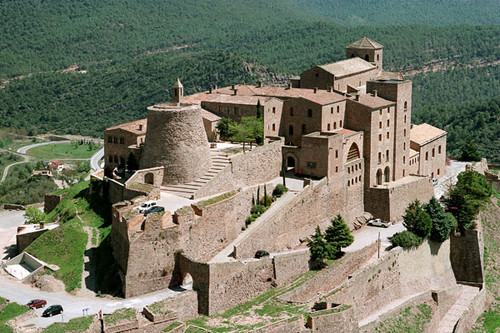
This may however be very interesting but it is not the reason why I am writing about the Cardona Castle… Nowadays it is a luxury hotel run by Paradores, a public leisure company, and happens to be home to a haunted bedroom: Room 712. People say you either have to be very brave, or not believe in ghosts, to stay in Room 712 at the Parador de Cardona. As a matter of fact, guests are only allocated this room on request as, after hearing reports and claims made by countless guests, the hotel management decided to close it to the public, unless specially requested. With Halloween around the corner this might just be the perfect place to spend the night if you want a fright!
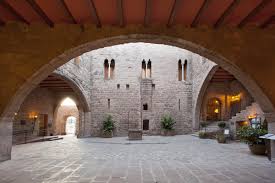
Strange noises, open tap, disturbing dreams and even apparitions; these are just a handful of the strange occurrences reported by those who have stayed in Room 712.
Whether you believe in paranormal phenomena or not, visiting this Parador will blow you away; not because of the legend, but because of its location in a stunning castle atop a headland.
Just 100 kilometres from Barcelona, this is one of the most impressive hotels in the entire Paradores of Spain network; a castle that, given its location and good condition, transports guests back in time to the Middle Ages in the blink of an eye. This 9th century fortified complex also features the Minyona Tower and a church, both from the 11th century. This castle's impressive location, atop a promontory, offers wonderful views of the Cardener River and the Salino valley, home to one of the world's most important potassium salt mines. Although it is currently inactive, discovering more about it on a guided tour comes highly recommended.
Even the smallest details at this castle are subject to careful consideration, including furniture, carpets and decorations, to ensure that at first glance, guests feel like they have been transported back in time 12 centuries. Even the architecture of the building is the stuff of fairytales, with long and narrow passages, austere, vaulted rooms with pointed arches, wooden beams and Gothic elements. All of this is shrouded in a silent, solemn atmosphere that takes on a mysterious aura when you reach the seventh floor or the west wing: home to Room 712. 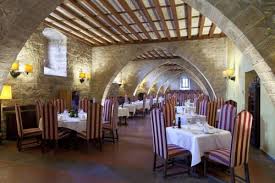
This room always remains closed, unless a guest is brave enough to specifically request it. In recent years, customers staying in this room claim to have felt strange presences. Most say that they simply had trouble sleeping or that they had a restless sleep; others, however, assert that it was impossible to sleep on account of furniture being moved in the room above, despite it always having been empty. Even cleaning staff at the Parador have decided to enter the room in pairs so that nobody is left alone at any time. In doing so, they try to avoid being by themselves with any of the strange phenomena reported in recent years, such as finding all the furniture together in the centre of the room, hearing voices, finding open taps and hearing strange noises when there was no guest inside. Some guests even claim to have seen ghostly figures.
Legend has it that the source of these paranormal occurrences is attributable to a sad story dating back to the 11th century, when a young Christian woman, Adalés, fell in love with a Muslim and was condemned by her father to live her life locked away on the Minyona Tower, where she died of sorrow. Her sorry soul, they claim, still wanders the area and is responsible for the strange occurrences that many have witnessed in Room 712.
Whether or not the legend is true, and whether we dare stay in Room 712 or not, what cannot be missed is the opportunity to visit this impressive castle. Furthermore, staying here offers us the chance to visit the medieval village of Cardona, full of narrow alleys and corners bursting with charm.
 1
Like
Published at 7:25 PM Comments (0)
1
Like
Published at 7:25 PM Comments (0)
Do you live on a battlefield?
Thursday, October 20, 2022
Do you know the history of your town? And no, I am not referring to recent history that has occurred in recent decades. By history, I mean centuries ago, a time when important population movements took place, mainly due to armed conflicts that occurred everywhere. If you live in Europe, quite possibly hundreds of years ago, the place you are stepping on was part of the battlefield of some war. The conquering desire of Spain or France, among others, can be seen with an interactive map.
After an intense collection of data, it has been possible to position some of the war events, of which there is evidence, with different colour markers. It is an exercise that aims to understand what has brought us here, our customs, the way we relate to each other and, of course, our relationship with our neighbours. After all, violence, unfortunately, has always been part of most communities. An interactive map can help us better understand what happened in history.
Let's see, therefore, how the various civilizations have developed after conflicts, why these events caused important changes in many societies and, of course, to what extent there are spaces of land which still have never been part of a battlefield. Even so, it is possible that, in the latter case, there was no documentation that corroborated these facts.

The Map of the geography of violence allows filtering by localities and municipalities in order to understand if they have been the target of a battlefield or if, on the contrary, peace has always been mediated. It is about carrying out an exercise to understand how modern day society is what it is today based on what happened in the past. If you take a look at the first events that occurred, you come to the conclusion that the first serious conflicts took place in Europe.
This caused armies to continually improve their equipment, allowing them to formalise new lines of conquest. Could it be one of the causes of the expansion of the Spanish army in areas like America? The establishment of colonies by France or Great Britain also explains this type of proposal. Well, why is this interactive map worth it? Among its curiosities, the links to web pages of information to learn more about the events that occurred at a given time and place are surprising.
It is a very interesting way to understand how history has changed people around the world. In addition, it is worth noting how the vast majority of records are present in Europe, with the first wars appearing on other continents many years after these conflicts. It is a history exercise that, on the other hand, stopped being updated in 2016. For this reason, conflicts such as the one in Ukraine and Russia, corresponding to this 2022, do not appear in the interactive database yet.
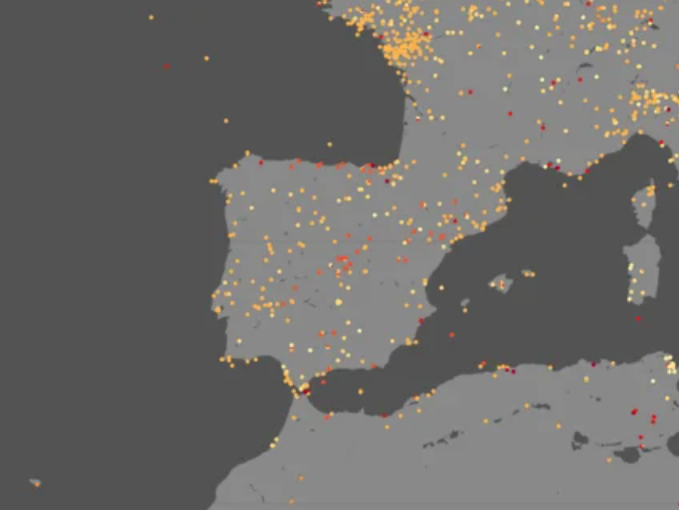
Finally, it is important to take into account the range of colours present on the map. This refers to elapsed time. It is not the first time we see this kind of map. Did you know that there is one where you can find out who is the most famous person in a certain place? Not to mention the one that shows what the most characteristic stereotypes are of a specific area in a city.
 2
Like
Published at 8:57 PM Comments (1)
2
Like
Published at 8:57 PM Comments (1)
Spain's Wierdest Festivals - El Colacho
Friday, October 14, 2022
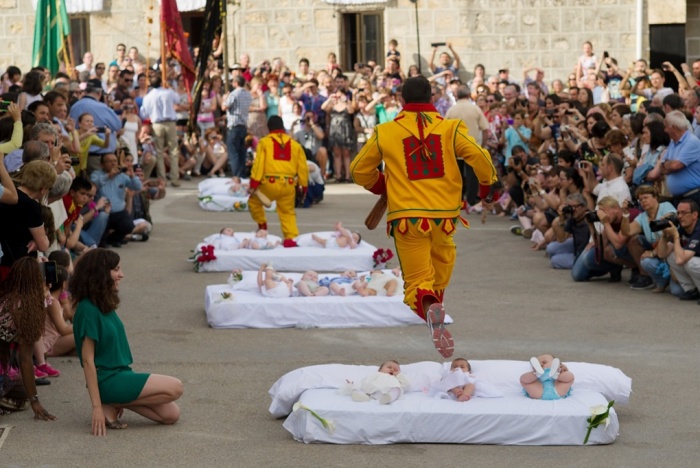
You would be forgiven for being curious about the title of this festival because even though Spain boasts some of the most unusual and bizarre festivals compared to the rest of the world, throwing tomatoes over each other as they do in Valencia or being chased down the street by a herd of bulls in Pamplona does not come close to the excitement aroused by the Baby Jumping Festival held each year in Castillo de Murcia.
The Baby jumping (El Colacho) is a traditional celebration dating back to 1620 that takes place annually to celebrate the Catholic feast of Corpus Christi in the village of Castrillo de Murcia near Burgos. Newborns are sprinkled with confetti and flower petals before being laid out on mattresses where men dressed in a yellow and red suits run and hurdle over them. The practice is meant to cleanse the infants of original sin and protect them from future evils. Afterwards, the town is also said to be cleansed of original sin.
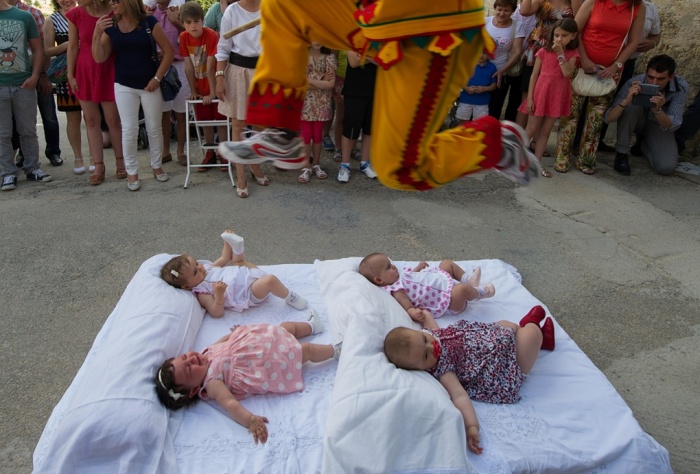
The Brotherhood of Santísimo Sacramento de Minerva organizes the week-long festivities which culminate when the Colacho jumps over the babies on the mattresses placed on the procession route crossing the town. The origins of the tradition are unknown but it ensures them safe passage through life and guards against illness and evil spirits.
While there are no reports of injuries caused by the flying devils, the strange practice is frowned upon by the clergy of the Catholic Church with reformer Pope Francis going so far as to ask priests and the Spanish people to distance themselves from the ritual and to downplay the tradition’s connection with Catholicism. The Church still teaches that it is baptism by water, not a giant leap by an airborne devil, which cleanses the soul of original sin.
 2
Like
Published at 8:55 PM Comments (2)
2
Like
Published at 8:55 PM Comments (2)
Human Towers in Tarragona
Thursday, October 6, 2022
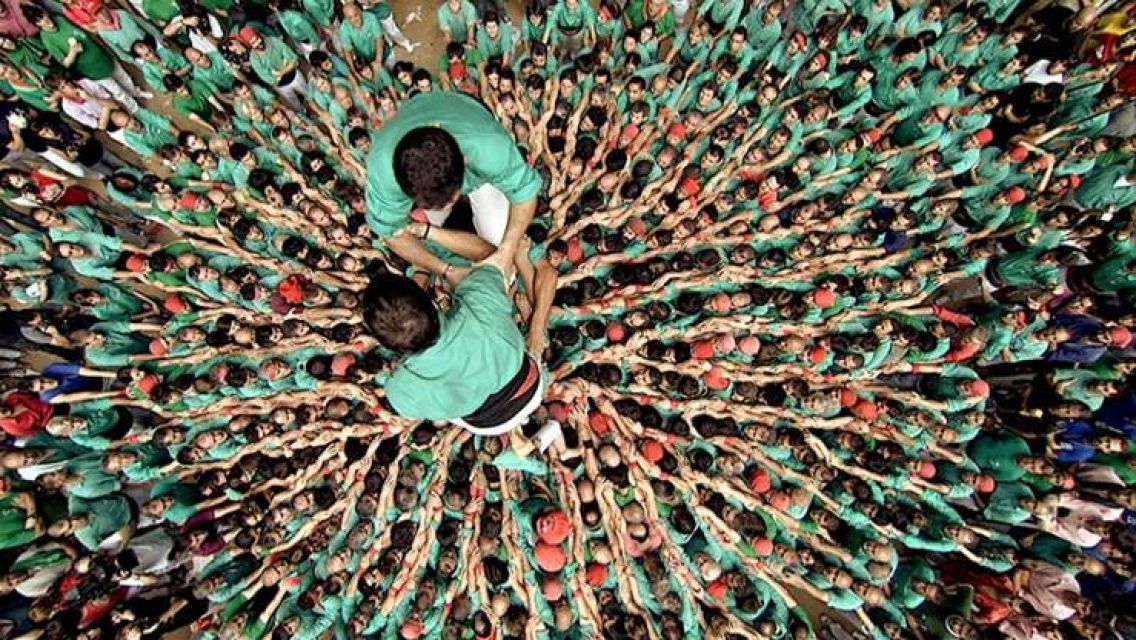
On the 1st of October this year, the first Saturday of the month, the biennial “Concurs de Castells” in Tarragona was celebrated. No less than 32 teams compete to build the highest human tower.
Some teams include up to 500 members who climb on top of each other to build a human pyramid. The previous edition year saw the first ever ten-tier pyramid in a competition. But it is not the men who need to be brave here, but the children, who have to climb to the pinnacle of the tower, often as young as five years. However, they wear foam helmets to protect them from injury. Nonetheless, if it was my child up there I would still be terrified.
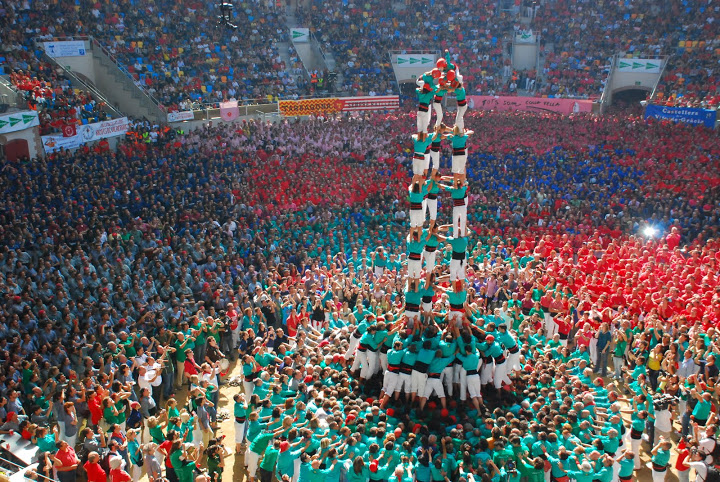
Now we also see foreign teams entering the competition. "Els Xiquets de Hangzhou", from China came in second place in the previous edition and is now getting more global coverage for this unusual event in other areas of the world.
Nearly 6.000 spectators enjoyed the most important tower-building event. The Human Tower Competition is a first-class event and a magnificent opportunity to enjoy human tower building, an example of Catalan culture declared Cultural and Intangible Heritage of Humanity by UNESCO.
How does it work?
Castells –a Catalonian word that means castles– are a cultural phenomenon particular to Catalonia and consist of erecting human towers. This tradition originated at the end of the 18th century in Valls, Tarragona, when rival groups of people called colles, began to compete in constructing the different kinds of human towers that we recognise nowadays.
There are three definite parts to a castle; the pinya or base the tronc or trunk and the pom de dalt or the crown of the castle.
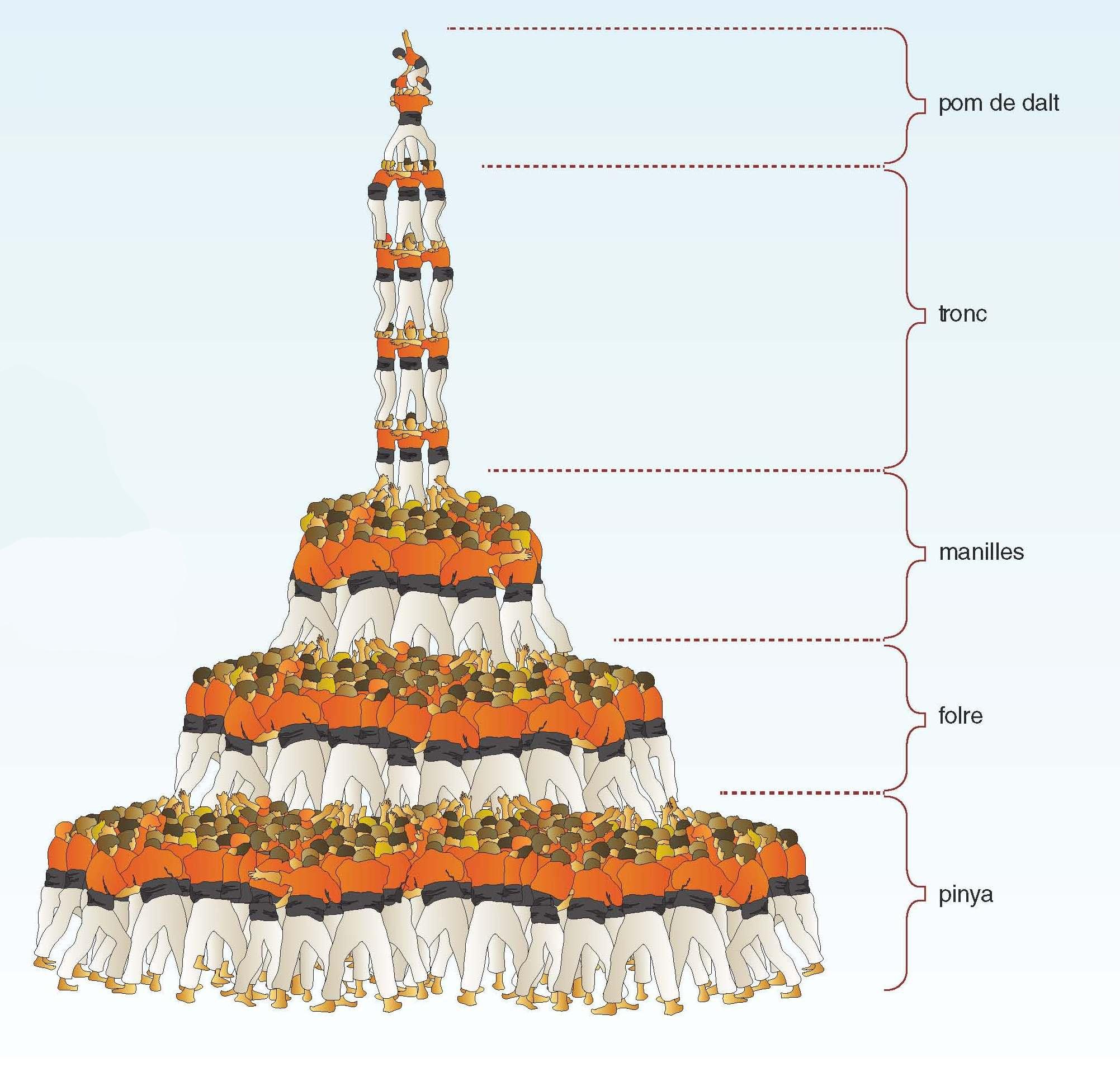 The pinya is the horizontal base of the construction on which all the accumulated weight rests and is used to stabilise and strengthen the erected structure, as well as softening or breaking the falls if any should occur. The pinya is the horizontal base of the construction on which all the accumulated weight rests and is used to stabilise and strengthen the erected structure, as well as softening or breaking the falls if any should occur.
This vertical structure is the trunk and consists of a certain number of people on each store, varying from 1 to 9 people depending on the castle and this also gives us the name of the castle.
At the very top of the castle are the canalla (which means youngsters), and they make up the pom de dalt, the crown of the castle, and because they are more agile and light-footed they are the ones in charge of climbing to the very top. One or two supporting structures can be built on top of the pinya if the castle is very high. The one directly on top of the pinya is called the folre and the one on top of that is the manilles. So the folre is at the second level and the manilles at third level height with respect to the ground. Every person who takes part in the building is called a casteller –castle-maker–.
The towers or castles are erected following very precise techniques and every castle is a law unto itself because of the different factors to be taken into account. As a rule, the pinya is formed first of all, this involves a very strict order and discipline, with everybody having an allotted station within the base group. Thereafter the different storeys begin to rise up. The strongest people at the bottom on top of the pinya and the most agile and lightest on the top storeys. The last person to climb the whole tower or castle is the anxaneta, a young girl or boy who, on arriving at the very summit raises his/her arm and salutes the public. This is the highlight of the event as the castell is considered to be crowned. But in fact, the job is only half done the structure still has to be brought down safely. The erection of human castles has different variants, some are with the pinya with folre and manilles, others with different trunk formations or where the castle is erected from top to bottom, this is done by brute force lifting the canalla up first and then the other storeys below them successively.
 0
Like
Published at 8:08 PM Comments (0)
0
Like
Published at 8:08 PM Comments (0)
Spam post or Abuse? Please let us know
|
|